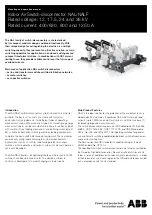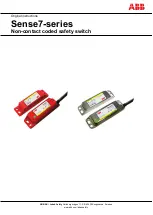
678
A
PPENDIX
D: 3C
OM
XRN
n
All multihomed links and alternate paths must carry
all
VLANs, and packets
must be tagged.
n
The Distributed Fabric is the STP root bridge.
n
Individual port members of each aggregated link must have VLAN membership
manually configured before the aggregated link is set up. You must not rely on
port members inheriting VLAN membership configuration from the aggregated
link. (See “VLANs” on page 681 for more information.)
n
If you are using resilient links, these must be configured on the remote unit,
not on the units within the Distributed Fabric.
If you follow the 3Com recommendations, should there be a unit or interconnect
failure within the Distributed Fabric, traffic flow will be maintained at all times. If
you want to know more detail about how the Distributed Fabric behaves in certain
failure scenarios, see “How a Failure affects the Distributed Fabric” on page 684.
Unit ID Numbering
Mechanism
This section outlines the mechanisms that the Switch 5500 Family uses to
determine the unit IDs for management purposes.
When a Fabric is created using the Switch 5500 the unit numbering can be
determined in two ways.
n
You can manually assign unit IDs 1 to 8 to specific units using the
c
hange[self-unit, unit-id] to [1-8, auto-numbering]
command from the System View. If you manually assign unit IDs to a Switch
using the
change
command the IDs will be retained after a power cycle.
If you add a unit to a Fabric that has previously been manually configured with
a unit ID and this conflicts with an ID already within the Fabric, then the Switch
with the lowest MAC address assumes the ID in question and the other unit
will automatically renumber.
3Com recommends that you manually assign the unit IDs within the Fabric if you
wish to have predictability of knowing which units have which IDs at all times.
n
Fabric topology is ‘discovered’ and the units auto-number their IDs.
Adding and removing units from the Fabric does not cause any renumbering to
occur and the Fabric will continue to work normally. Renumbering only occurs
when the Fabric is next power cycled if the units are configured to auto-number.
The unit LEDs will display the unit number in the Fabric, from 1 to 8.
Network Example
using XRN
The following example explains how to set up XRN in a network to gain maximum
resilience using two Distributed Fabrics. The same process scales for larger
networks if you are using multiple XRN Distributed Fabrics.
XRN Distributed Fabric
Network
The example in Figure 180 shows a network with two Switches interconnected to
create a single XRN Distributed Fabric in the Server Distribution section of the
network, this Fabric in turn is connected to a Fabric within the Core of the
network. The servers are multi-homed as are the Switch 5500 Fabrics to create a
highly resilient network.
Summary of Contents for 5500 SI - Switch - Stackable
Page 24: ...24 ABOUT THIS GUIDE...
Page 50: ...50 CHAPTER 1 GETTING STARTED...
Page 54: ...54 CHAPTER 2 ADDRESS MANAGEMENT CONFIGURATION...
Page 78: ...78 CHAPTER 3 PORT OPERATION...
Page 88: ...88 CHAPTER 4 XRN CONFIGURATION...
Page 122: ...122 CHAPTER 8 VLAN VPN CONFIGURATION...
Page 216: ...216 CHAPTER 15 SSH TERMINAL SERVICES...
Page 268: ...268 CHAPTER 16 IP ROUTING PROTOCOL OPERATION...
Page 308: ...308 CHAPTER 17 NETWORK PROTOCOL OPERATION...
Page 349: ...349...
Page 350: ...350 CHAPTER 18 MULTICAST PROTOCOL...
Page 522: ...522 CHAPTER 22 FILE SYSTEM MANAGEMENT...
Page 584: ...584 CHAPTER 30 PASSWORD CONTROL CONFIGURATION OPERATIONS...
Page 600: ...600 CHAPTER 31 MSDP CONFIGURATION...
Page 614: ...614 CHAPTER 32 CLUSTERING...
Page 670: ...670 CHAPTER C AUTHENTICATING THE SWITCH 5500 WITH CISCO SECURE ACS...









































